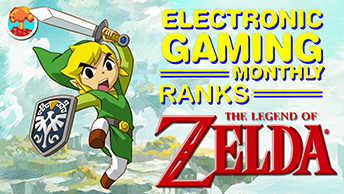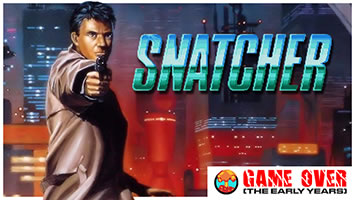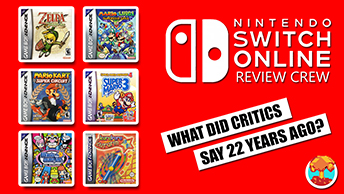- CLASSIC MAGAZINES
- REVIEW CREW
A show recapping what critics thought back
when classic games first came out! - NEXT GENERATION'S BEST & WORST
From the worst 1-star reviews to the best
5-stars can offer, this is Next Generation! - NINTENDO POWER (ARCHIVE)
Experience a variety of shows looking at the
often baffling history of Nintendo Power! - MAGAZINE RETROSPECTIVE
We're looking at the absolutely true history of
some of the most iconic game magazines ever! - SUPER PLAY'S TOP 600
The longest and most ambitious Super NES
countdown on the internet! - THEY SAID WHAT?
Debunking predictions and gossip found
in classic video game magazines! - NEXT GENERATION UNCOVERED
Cyril is back in this spin-off series, featuring the
cover critic review the art of Next Generation! - HARDCORE GAMER MAGAZING (PDF ISSUES)
Download all 36 issues of Hardcore Gamer
Magazine and relive the fun in PDF form!
- REVIEW CREW
- ELECTRONIC GAMING MONTHLY
- ELECTRONIC GAMING MONTHLY RANKS
From Mario to Sonic to Street Fighter, EGM
ranks classic game franchises and consoles! - ELECTRONIC GAMING MONTHLY BEST & WORST
Counting down EGM’s best and worst reviews
going year by year, from 1989 – 2009! - ELECTRONIC GAMING BEST & WORST AWARDS
11-part video series chronicling the ups and
downs of EGM’s Best & Worst Awards!
- ELECTRONIC GAMING MONTHLY RANKS
- GAME HISTORY
- GAME OVER: STORY BREAKDOWNS
Long-running series breaking down game
stories and analyzing their endings! - A BRIEF HISTORY OF GAMING w/ [NAME HERE]
Real history presented in a fun and pithy
format from a variety of game historians! - THE BLACK SHEEP
A series looking back at the black sheep
entries in popular game franchises! - INSTANT EXPERT
Everything you could possibly want to know
about a wide variety of gaming topics! - FREEZE FRAME
When something familiar happens in the games
industry, we're there to take a picture! - I'VE GOT YOUR NUMBER
Learn real video game history through a series
of number-themed episodes, starting at zero! - GREAT MOMENTS IN BAD ACTING
A joyous celebration of some of gaming's
absolute worst voice acting!
- GAME OVER: STORY BREAKDOWNS
- POPULAR SHOWS
- DG NEWS w/ LORNE RISELEY
Newsman Lorne Riseley hosts a regular
series looking at the hottest gaming news! - REVIEW REWIND
Cyril replays a game he reviewed 10+ years
ago to see if he got it right or wrong! - ON-RUNNING FEUDS
Defunct Games' longest-running show, with
editorials, observations and other fun oddities! - DEFUNCT GAMES QUIZ (ARCHIVE)
From online quizzes to game shows, we're
putting your video game knowledge to the test!- QUIZ: ONLINE PASS
Take a weekly quiz to see how well you know
the news and current gaming events! - QUIZ: KNOW THE GAME
One-on-one quiz show where contestants
find out if they actually know classic games! - QUIZ: THE LEADERBOARD
Can you guess the game based on the classic
review? Find out with The Leaderboard!
- QUIZ: ONLINE PASS
- DEFUNCT GAMES VS.
Cyril and the Defunct Games staff isn't afraid
to choose their favorite games and more! - CYRIL READS WORLDS OF POWER
Defunct Games recreates classic game
novelizations through the audio book format!
- DG NEWS w/ LORNE RISELEY
- COMEDY
- GAME EXPECTANCY
How long will your favorite hero live? We crunch
the numbers in this series about dying! - VIDEO GAME ADVICE
Famous game characters answer real personal
advice questions with a humorous slant! - FAKE GAMES: GUERILLA SCRAPBOOK
A long-running series about fake games and
the people who love them (covers included)! - WORST GAME EVER
A contest that attempts to create the worst
video game ever made, complete with covers! - LEVEL 1 STORIES
Literature based on the first stages of some
of your favorite classic video games! - THE COVER CRITIC
One of Defunct Games' earliest shows, Cover
Critic digs up some of the worst box art ever! - COMMERCIAL BREAK
Take a trip through some of the best and
worst video game advertisements of all time! - COMIC BOOK MODS
You've never seen comics like this before.
A curious mix of rewritten video game comics!
- GAME EXPECTANCY
- SERIES ARCHIVE
- NINTENDO SWITCH ONLINE ARCHIVE
A regularly-updated list of every Nintendo
Switch Online release, plus links to review! - PLAYSTATION PLUS CLASSIC ARCHIVE
A comprehensive list of every PlayStation
Plus classic release, including links! - RETRO-BIT PUBLISHING ARCHIVE
A regularly-updated list of every Retro-Bit
game released! - REVIEW MARATHONS w/ ADAM WALLACE
Join critic Adam Wallace as he takes us on a
classic review marathon with different themes!- DEFUNCT GAMES GOLF CLUB
Adam Wallace takes to the links to slice his way
through 72 classic golf game reviews! - 007 IN PIXELS
Adam Wallace takes on the world's greatest spy
as he reviews 15 weeks of James Bond games! - A SALUTE TO VAMPIRES
Adam Wallace is sinking his teeth into a series
covering Castlevania, BloodRayne and more! - CAPCOM'S CURSE
Adam Wallace is celebrating 13 days of Halloween
with a line-up of Capcom's scariest games! - THE FALL OF SUPERMAN
Adam Wallace is a man of steel for playing
some of the absolute worst Superman games! - THE 31 GAMES OF HALLOWEEN
Adam Wallace spends every day of October afraid
as he reviews some of the scariest games ever! - 12 WEEKS OF STAR TREK
Adam Wallace boldly goes where no critic has
gone before in this Star Trek marathon!
- DEFUNCT GAMES GOLF CLUB
- DAYS OF CHRISTMAS (ARCHIVE)
Annual holiday series with themed-episodes
that date all the way back to 2001!- 2015: 30 Ridiculous Retro Rumors
- 2014: 29 Magazines of Christmas
- 2013: 29 Questionable Power-Ups of Christmas
- 2012: 34 Theme Songs of Christmas
- 2011: 32 Game Endings of Christmas
- 2010: 31 Bonus Levels of Christmas
- 2009: 30 Genres of Christmas
- 2008: 29 Controls of Christmas
- 2007: 34 Cliches of Christmas
- 2006: 33 Consoles of Christmas
- 2005: 32 Articles of Christmas
- 2004: 31 Websites of Christmas
- 2003: 29 Issues of Christmas
- 2002: 28 Years of Christmas
- 2001: 33 Days of Christmas
- NINTENDO SWITCH ONLINE ARCHIVE
- REVIEW ARCHIVE
- FULL ARCHIVE
Teenage Mutant Ninja Turtles Tetralogy: 1990s Game Critics Weigh In
Leonardo. Donatello. Michelangelo. Raphael. That guy from Arrested Development. They're all back and ready to kick some Krang in the newest Teenage Mutant Ninja Turtles movie. To help celebrate what I'm sure will be a noisy mess of a movie, we're taking a look back at the Teenage Mutant Ninja Turtles tetralogy. This is a series of games that ran from the Nintendo Entertainment System to the Super NES, and included a couple of the best known brawlers of all time.
Join us as we analyze what magazines like Electronic Gaming Monthly, Die Hard Game Fan, CVG, GamePro and Super Play thought of Turtles in Time, The Manhattan Project and The Arcade Game. And just for fun, we'll also be taking a look at the 16-bit spin-offs, including The Hyperstone Heist and Tournament Fighters. So put those nun chucks down and discover the early history of the Teenage Mutant Ninja Turtles.
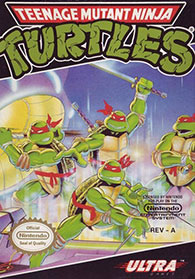
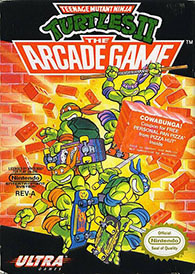
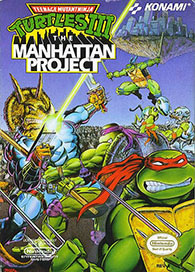
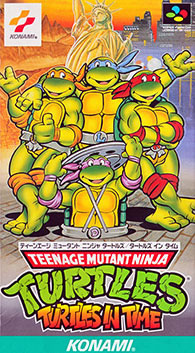
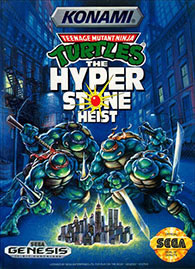
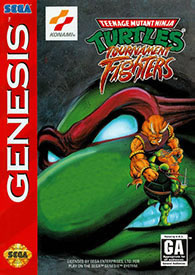
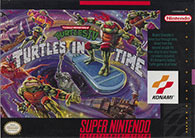
Join us as we analyze what magazines like Electronic Gaming Monthly, Die Hard Game Fan, CVG, GamePro and Super Play thought of Turtles in Time, The Manhattan Project and The Arcade Game. And just for fun, we'll also be taking a look at the 16-bit spin-offs, including The Hyperstone Heist and Tournament Fighters. So put those nun chucks down and discover the early history of the Teenage Mutant Ninja Turtles.

TEENAGE MUTANT NINJA TURTLES
Considered by many to be one of the most frustrating 8-bit games of all time, Ultra's first stab at bringing the Teenage Mutant Ninja Turtles to the Nintendo Entertainment System was met with decidedly mixed results. While certainly popular, critics were split as to whether the game was pure genius or pure crap. I think it's safe to say history has helped decided the answer to that head-scratcher.
On the positive side, CVG featured Leonardo on their cover and gave this 8-bit game an 89%. "The Teenage Mutant Hero Turtles have certainly cowabunga'd their way into this issue with a vengeance," explained Paul Rand. He liked how much content there is, calling it an "extremely good value, both for those who buy it and those who get it for now!" I'm not entirely sure what that means.
Nintendo Power liked the Turtles so much that it was their 8th best reviewed game of 1989. What's more, UK magazines Raze and The Games Machine both gushed over the great graphics and characters. Not even the extreme challenge could keep the two magazines from scoring the game an 86% and 87%.
But before you think every critic loved this awful 2D waste of time, Electronic Gaming Monthly had a lot of harsh words for the poorly developed game. Jim complained that "the controls are too jerky and it quickly becomes difficult to control your character." To make matters worse, he added that "the scrolling also hinders the game by placing you in vulnerable positions." Donn agreed, saying that "TMNT wasn't overly impressive." He's not wrong.

TEENAGE MUTANT NINJA TURTLES II: THE ARCADE GAME
After seeing the success of Konami's arcade game, the next obvious step was to port it to the Nintendo Entertainment System. There's just one problem: There's already a Teenage Mutant Ninja Turtles game on the market. Ultra's solution was to turn the arcade port into a sequel to the completely unrelated 1989 NES game. I understand the reasoning, but all it did was throw off the numbering going forward.
Critics didn't seem all that concerned about the numbering at the time, with GamePro giving it a perfect 5 out of 5. "If you've had a bad day, bashing Foot Clan boffos is a radical way to lighten up," the magazine advises. CVG echoes those thoughts, calling it a great two-player game with great graphics and arcade fun.
Electronic Gaming Monthly went even further, giving it mostly 8s and 9s. "The turtle quartet never looked better than they do in this super sequel," notes Ed Semrad. "An action game, Turtles has the perfect blend of graphics and action." Martin agreed, positing that "Konami is pushing the NES to its limits with this hero in a half-megabyte."
The lone dissenter came from Video Games & Computer Entertainment, which featured the game on the cover and gave it a 6 out of 10. "Take the Teenage Mutant Ninja Turtles out of this cartridge -- what little of their humor and personality is present to begin with -- and you're left with a spectacular-looking but repetitive action game."

TEENAGE MUTANT NINJA TURTLES III: THE MANHATTAN PROJECT
Although it only took Konami two years to follow-up their Teenage Mutant Ninja Turtles arcade game, that clearly wasn't quick enough to please eager console gamers. To please the masses, Konami rushed out Teenage Mutant Ninja Turtles III: The Manhattan Project, a completely original brawler exclusive to the Nintendo Entertainment System. Critics were largely impressed, with some saying it was the Turtles' best 8-bit outing yet.
GamePro gave it a perfect 5 out of 5 and loved its "non-stop, frantic fighting action." The magazine made this curiously misspelled point: "Nintendon't do alot of things that its 16-bit big brothers can, but one thing you can always count on is a Teenage Mutant Ninja Turtles adventure to push your NES to the max." I'm sure glad we've stopped using "Nintendon't" as slang in reviews.
Video Games & Computer Entertainment was also impressed, a complete turnaround after dismissing the last installment as being too repetitive. "Basically, we're looking at the best Turtles game by far," concludes Josh Mandel in his lengthy review. Nintendo Power was also into it, giving it a 3.9 out of 5 and narrowly missing our list of Nintendo Power's Best Reviewed Games of 1992.
Electronic Gaming Monthly, on the other hand was not as sold as the other magazines. "This latest Turtles' title does pack a punch, but there are some shortcomings," starts Steve. "The flicker problem that plagued the second adventure turns up again in part three." Martin wasn't as sold, giving it a 7 and noting that the "graphics and sound are improved a bit and the game play has a few new techniques," but "the game play is extremely repetitive and really has nothing innovative." EGM gave the game 7s and 8s, much lower than TMNT II: The Arcade Game.

TEENAGE MUTANT NINJA TURTLES IV: TURTLES IN TIME
After testing the limits of the Nintendo Entertainment System, Konami finally brought Turtles in Time to the Super NES. Due to the addition of that original 1989 game and The Manhattan Project, this arcade port ended up being Teenage Mutant Ninja Turtles IV. Confusing numbering aside, critics loved that this Super NES installment featured new levels and bosses.
After complaining that TMNT II was too repetitive, Video Games & Computer Entertainment did a complete reversal and gave Turtles in Time a 9 out of 10. "Even with the lack of challenge, there's a lot to like about this game: gorgeous graphics, rocking soundtracks and superb playability." Critic Zach Meston later went on to call it a "must-buy."
These sentiments were shared at Super NES Buyer's Guide, which called the game "stress relief." Guy explains: "If I wouldn't have seen the Super NES sitting in front of me, I would not have believed it!" I'm not sure I would go that far, but clearly that's a theme repeated throughout most of the reviews. GamePro even went as far as to suggest Turtles in Time is good enough to buy a Super NES for.
It was Electronic Gaming Monthly that was the most enthusiastic, giving the game nothing but 9s and slapping a Platinum Award on the brawler. "Quite honestly the best side-scrolling action game to appear on the Super NES so far," Steve said. "Besides virtually duplicating the arcade title, Turtles 4 also delivers some of the best graphics you'll ever find at home!" Hear that Uncharted 4? This Mutant Turtles game from 1992 has the best graphics you'll ever find at home.

TEENAGE MUTANT NINJA TURTLES: THE HYPERSTONE HEIST
A few months after stunning critics and consumers alike with Turtles in Time, Konami returned with a Genesis exclusive named The Hyperstone Heist. Despite having a different story, much of this fifth Turtles game is recycled from past iterations. The brief adventure takes levels and bosses from older games and mashes them together hoping you won't notice. I definitely noticed, and so did the critics in 1992.
Electronic Gaming Monthly's Sushi-X noted that "it doesn't compare to the arcade, and even on Normal Mode it is incredibly easy." These are some of the complaints heard around the industry, as the Genesis exclusive mostly picked up 7s and 8s. Sega Force's Paul compared The Hyperstone Heist to another Sega brawler: "The MD version of Turtles is like Golden Axe 2 -- ie, totally unoriginal but good fun all the same."
Even the high scores still found ways of dwelling on the easy gameplay and short length. GamePro gave the game a 4.5 out of 5, but wished it was more challenging. Same with Mega Play, which gave it an 83%. Mean Machines gave the game an 83% and spent a lot of the review complaining about having too many continues. Everybody agreed, this was a big step down after Turtles in Time.

TEENAGE MUTANT NINJA TURTLES: TOURNAMENT FIGHTERS
Given the overwhelming success of Street Fighter II, it was only a matter of time before the heroes in a half-shell found their way into a one-on-one fighting game. Konami ran with this idea in 1993, creating three very different versions on the Genesis, Super NES and Nintendo Entertainment System.
We'll start with the 8-bit game, which is both the rarest to find and the most maligned by critics. "Ouch!" Yells GamePro. "This TMNT game hurts, and it's not just from the fighting." Electronic Gaming Monthly was a little more kind, but still gave the game mostly 7s. "Well, it wasn't exactly essential to do a version of this game for 8-Bits, but on the smaller platform, TMNT: TF does pretty well." Not exactly a ringing endorsement.
Critics were a bit more receptive to the Genesis version, which scored a 68% from Force Mega and 79% from Mean Machines Sega. GamePro called it a "fun way to work up a fighting sweat, but major league Street Fighter junkies should not approach this cart with a killer attitude." Even Die Hard Game Fan turned on the Turtles, with scores ranging from 49% all the way up to 70%. "What happened?" asks K. Lee. "My worst nightmare has come true: KONAMI MADE A BAD GAME!" Calm down, it's going to be okay. Konami has plenty of bad games ahead of them.
Of the three iterations of Tournament Fighters, the Super NES version was by far the best reviewed. Die Hard Game Fan went from hyperventilating about Konami's track record to giving it scores as high as 96%. "If Street Fighter 2 didn't exist, I honestly think Tournament Fighters would be the best fighting game of all time," explains The Enquirer. Super Play backs that up, giving it a 90% and calling it "great fun and a worthy bed-fellow to SFII." You also saw high scores from SNES Force, Game Informer, Nintendo Power and Electronic Gaming Monthly, who called it a "real surprise."

THE WINNER: TURTLES IN TIME
Critics generally liked the Teenage Mutant Ninja Turtles brawlers in the 1990s, giving high marks to the final three games in the Turtles tetralogy. The best reviewed game of the bunch is, unsurprisingly, Turtles in Time. That said, both The Arcade Game and The Manhattan Project were praised for pushing the NES hardware to the limits. On the flip side, critics were less enthusiastic about Tournament Fighters and the very first Teenage Mutant Ninja Turtles game. These days, you're better off sticking with Turtles in Time.
HOME |
CONTACT |
NOW HIRING |
WHAT IS DEFUNCT GAMES? |
NINTENDO SWITCH ONLINE |
RETRO-BIT PUBLISHING
Retro-Bit |
Switch Planet |
The Halcyon Show |
Same Name, Different Game |
Dragnix |
Press the Buttons
Game Zone Online | Hardcore Gamer | The Dreamcast Junkyard | Video Game Blogger
Dr Strife | Games For Lunch | Mondo Cool Cast | Boxed Pixels | Sega CD Universe | Gaming Trend
Game Zone Online | Hardcore Gamer | The Dreamcast Junkyard | Video Game Blogger
Dr Strife | Games For Lunch | Mondo Cool Cast | Boxed Pixels | Sega CD Universe | Gaming Trend
Copyright © 2001-2025 Defunct Games
All rights reserved. All trademarks are properties of their respective owners.
All rights reserved. All trademarks are properties of their respective owners.













